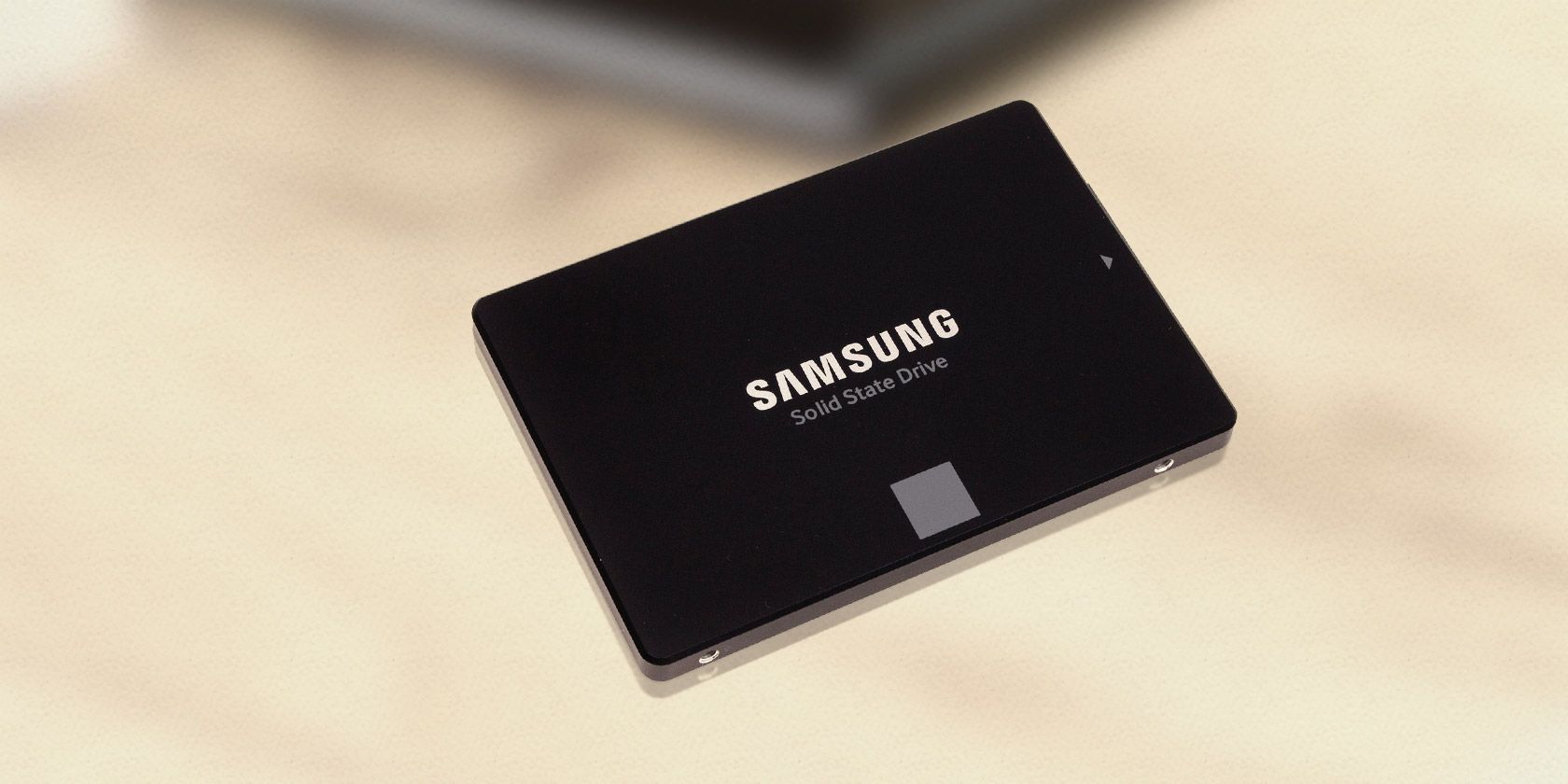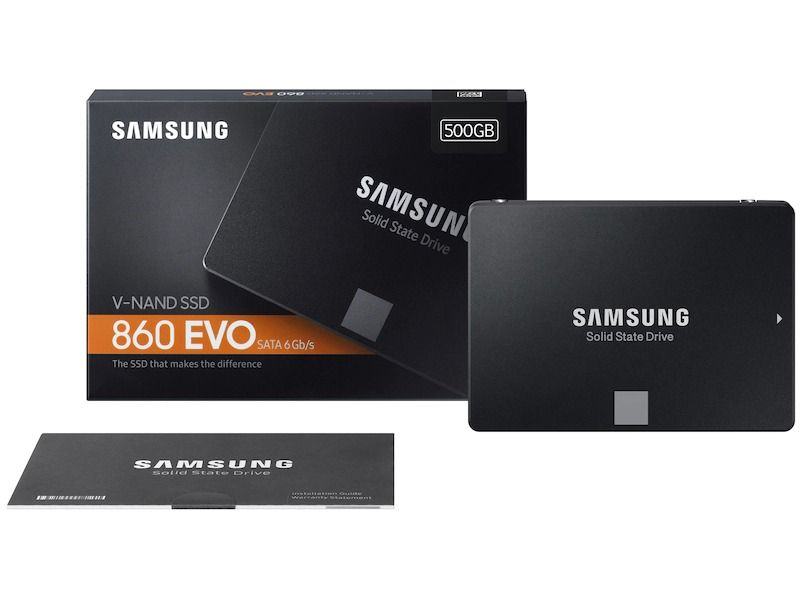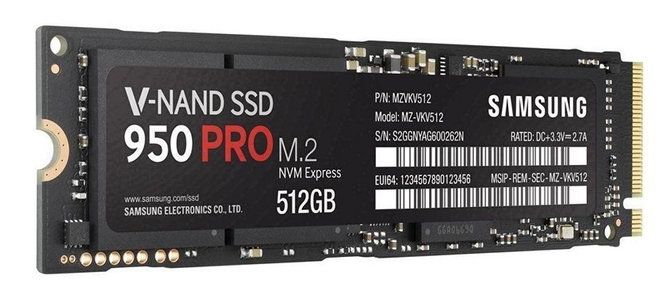PCIe SSDs may be technologically superior, but that doesn't mean you should always buy them over SATA drives.
In this article, we'll look at the differences between SATA and PCIe SSDs and what you need to know to make an informed decision when buying an SSD.
What Is a PCIe SSD?
What is it about PCIe SSDs that make them more desirable and expensive than SATA SSDs? Does it come down to performance? Yes, pretty much.
You can think of PCIe (Peripheral Component Interconnect Express) as a more direct data connection to the motherboard.
It's typically used with devices like graphics cards, which also need extremely fast data connections, but PCIe has proven useful for data storage drives too.
PCIe 3.0 has an effective transfer speed of 985MB/s per lane, and since PCIe devices can support 1x, 4x, 8x, or 16x lanes, you're looking at potential transfer speeds up to 15.76GB/s. Not only that, but PCIe 4.0 doubles that to around 32GB/s, and PCIe 5.0 doubles it again, to a whopping 64GB/s. That's way outside the league of SATA SSDs!
But does that mean a PCIe SSD with 16x lanes is 25-times faster than a SATA SSD? Theoretically, sure, but you won't find a consumer-grade SSD with that many data lanes.
Usually, you'll be deciding between 2x and 4x, which means a maximum transfer speed closer to 3.94GB/s.
And even so, you're only going to notice the difference between PCIe and SATA when transferring HUGE files that take a while.
If you're playing a video game, for example, and only want faster load speeds when starting up the game or changing maps, both PCIe SSDs and SATA SSDs will feel lightning fast.
PCIe SSDs tend to have worse battery life. Suppose you're just browsing the web, working in Google Docs, shooting emails, or doing something that's purely CPU- or RAM-intensive. In that case, you won't notice much of a difference between SATA and PCIe SSDs (because such activities don't involve lots of data transfer).
But if you're constantly reading and transferring data, then PCIe SSDs will use more energy and drain battery life faster.
PCIe AHCI SSDs vs. PCIe NVMe SSDs. If you ever have to choose between these two standards, go with NVMe. AHCI is older and was designed for HDDs and SATA, which means that a PCIe SSD using AHCI may not perform to its max potential. NVMe was designed specifically for use with PCIe, so it performs better.
For more on NVMe, check out our guide on whether you should upgrade to NVMe or stay with SATA SSDs.
What Is a SATA SSD?
SATA (Serial ATA) is a connection interface used by SSDs to communicate data with your system. It was created in 2003, which means it has had a lot of time to cement itself as one of the most widely-used connection types today.
SATA SSDs have better hardware compatibility. If you get a SATA SSD, it's pretty much guaranteed to work with whatever desktop or laptop computer you have right now—even if that computer is a decade old.
SATA SSDs have worse relative performance. As of this writing, SATA 3.0 is the most prevalent form of SSD, which has a theoretical transfer speed of 6Gb/s (750MB/s). But due to some physical overhead that occurs when encoding the data for transfer, it actually has a practical transfer speed of 4.8Gb/s (600MB/s).
While 600MB/s is pretty fast, it's nowhere close to the transfer speeds offered by PCIe SSDs.
That said, SATA SSDs are more than fast enough for casual home users—to help illustrate how fast it is, a SATA SSD can transfer an entire CD's worth of data every second—so don't let this be a deal-breaker.
SATA SSDs tend to be cheaper. This is probably the most important point for most home users. The truth is, the difference in price between SATA and PCIe SSDs is significant—almost as stark as the difference in price between SSDs and HDDs.
Consider the price of the Samsung 860 EVO 500GB SATA SSD and compare it to the Samsung 970 EVO 500GB PCIe SSD.
While both drives are SSDs and have the same capacity, the SATA SSD is almost half the price of the PCIe SSD. This is true across the board: SATA SSDs are more budget-friendly than PCIe SSDs.
What Are M.2 and U.2?
M.2 ("M dot two") and U.2 ("U dot two") are form factor standards that specify the shape, dimensions, and layouts of a physical device. Both the M.2 and U.2 standards are used in conjunction with both SATA and PCIe drives.
M.2 is more common by a longshot, so if you have to pick between the two and aren't sure which way to go, M.2 is the safer option. U.2 is mainly used for Intel 750 series SSDs, and you won't find many others that support it.
When using M.2 for a SATA SSD, performance is the same as using a regular SATA form factor. When using M.2 for a PCIe SSD, you're capped at x4 lanes, which is still more than enough for a casual home user.
Plus, x4 SSDs are more common than x2 SSDs and not that much more expensive, so you might as well go with that.
Note: You can buy an adapter that turns an M.2 connector into a U.2 connector or vice versa, but such adapters may not fit the physical confinements of what you're trying to do.
PCIe SSD vs. SATA SSD: Which SSD Type Is Right for You?
Your choice between PCIe and SATA SSDs depends on two key factors. One, your budget, and, secondly, your expectations when it comes to performance. If you're on a tight budget, go with SATA. If you need maximum performance for frequent file transfers, go with PCIe. Both are most convenient to use in the M.2 form factor.
If you're currently using an HDD, then whichever you pick, you'll do just fine. Both SATA and PCIe SSDs are demonstrably better than HDDs in terms of speed, so you really can't go wrong either way. If PCIe is what you've settled on, you should also read more on the different versions to ensure you make the right choice on your purchase.



